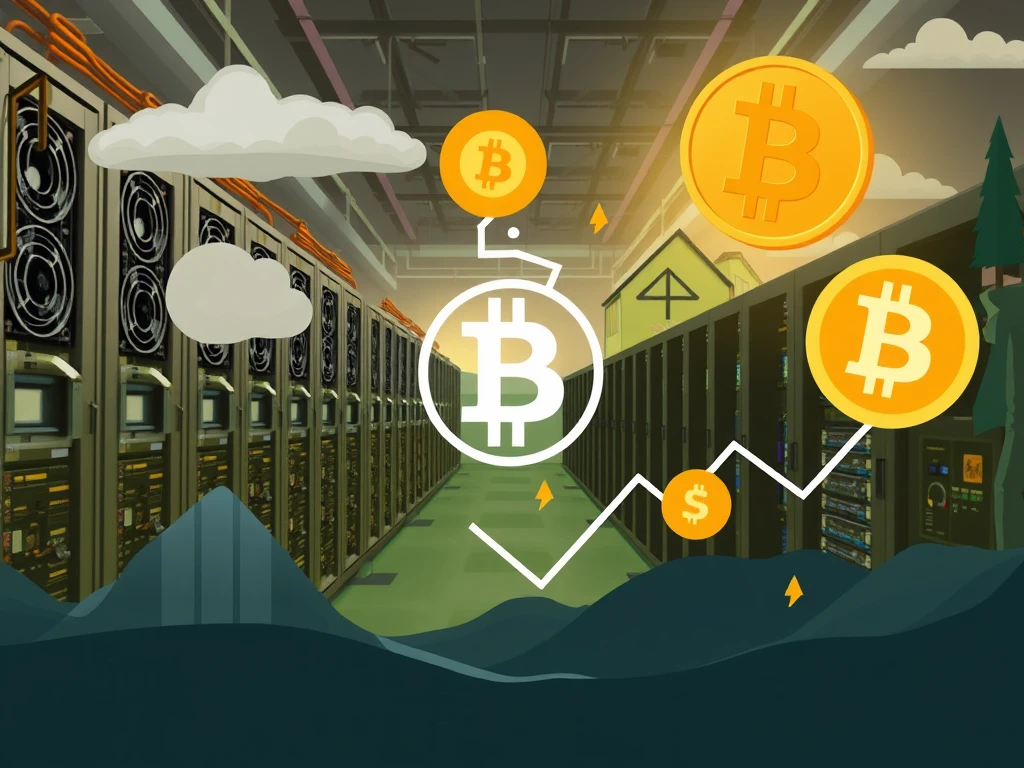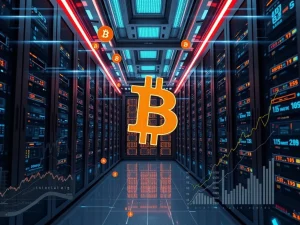Smart Bitcoin Mining: Why Debt Offers a New Opportunity

The world of Bitcoin mining is constantly evolving, and staying profitable is key. As market dynamics shift and operational costs rise, a new strategy is emerging for Bitcoin mining firms: holding onto their mined BTC and leveraging it through Bitcoin loans instead of selling.
The Smart Strategy: Hold Your BTC and Borrow
According to John Glover, chief investment officer at Bitcoin lending firm Ledn, BTC mining companies should reconsider their traditional approach of selling mined Bitcoin to cover expenses. His suggestion is straightforward: keep the Bitcoin they mine and use it as collateral for fiat-denominated loans. These loans can then fund operating costs.
Why this approach? Glover argues that miners inherently understand Bitcoin’s potential for future price appreciation. Selling BTC means losing out on that upside. Holding it, however, offers several potential benefits:
- **Price Appreciation:** Miners benefit directly if the price of Bitcoin increases.
- **Tax Deferral:** Selling triggers taxable events; borrowing against an asset can potentially defer taxes.
- **Extra Revenue:** Held BTC could potentially be lent out to generate additional yield.
This strategy aligns with the view that Bitcoin’s fundamentals are increasingly diverging from those of traditional fiat currencies.
Miner Financing: Learning from Corporate Examples
This debt-based approach to miner financing isn’t entirely new. Companies outside the mining sector, like MicroStrategy, have successfully issued corporate debt and equity to acquire Bitcoin, aiming to profit from the fundamental differences between BTC and the fiat currency used for the capital raise. Miners, who are constantly generating BTC, are uniquely positioned to adopt a similar model.
Instead of selling their primary product (Bitcoin) into a depreciating currency (fiat) to pay bills, they can use the appreciating asset as leverage.
Challenges Facing BTC Mining Operations
Profitability in BTC mining faces significant pressure. The hashprice – a metric indicating how much revenue miners earn per unit of computing power – has declined. This is largely due to increased competition as more powerful hardware is deployed globally to secure the network. The industry is capital-intensive, with costs rising as mining equipment (ASICs) becomes more sophisticated.
Adding to the strain are external factors like trade tensions, which can increase the cost of importing mining hardware. Macroeconomic uncertainty also plays a role, impacting market sentiment and operational stability.
This pressure led mining firms to sell over 40% of their mined Bitcoin in March 2025, a notable increase compared to previous months and a reversal of a post-halving trend. This high sell-off rate highlights the financial difficulties many miners face.
How Bitcoin Loans Provide a Lifeline
In this challenging environment, Bitcoin loans secured by mined BTC could offer a vital financial tool. Instead of being forced sellers during periods of market stress or high operating costs, miners can access liquidity by borrowing against their Bitcoin holdings. This allows them to cover expenses without liquidating their primary asset at potentially unfavorable prices.
Recent examples, like Riot Platforms securing a substantial Bitcoin-backed loan from Coinbase, demonstrate that this financing method is already being adopted by major players in the industry. This form of crypto debt provides operational flexibility and allows miners to maintain exposure to Bitcoin’s potential upside.
Embracing Crypto Debt for Future Growth
The suggestion from Ledn’s executive points towards a potential strategic shift within the Bitcoin mining sector. By embracing crypto debt and using mined Bitcoin as collateral, miners can navigate operational costs more effectively, potentially improve their tax position, and remain positioned to benefit from Bitcoin’s long-term growth trajectory. This approach leverages the unique position of miners as continuous generators of a potentially appreciating digital asset, offering a way to thrive even amidst increasing competition and economic uncertainty.









